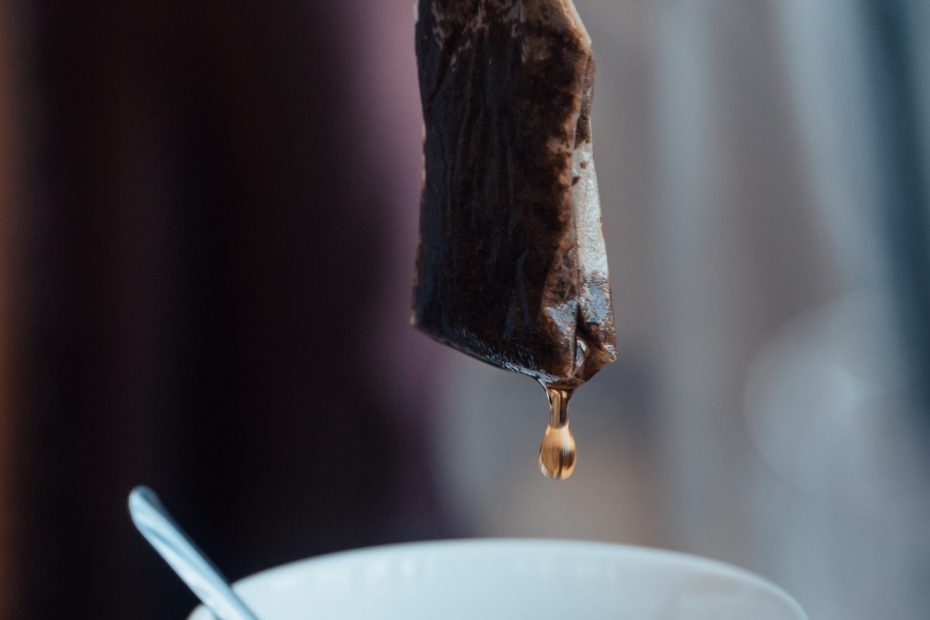Why Should You Not Leave Tea Bag?
The history of the Tea Sachet is quite recent and there are two theses about its authorship–or maternity.
The first thesis attributes the invention to two American women, Roberta C. Lawson and Mary Molaren, who apparently were the first to file a patent application on the invention of the Tea bag in 1901. The application was not officially approved until two years later, in 1903. According to the description, it was a container capable of holding enough leaves to make one cup of Tea, thus avoiding waste. An all-female intuition, in short!
But according to the most credited tradition, it was a tea and coffee merchant, New Yorker Thomas Sullivan, who accidentally created the Tea bag in the early 1900s. Around 1904, he began sending his customers samples of Tea enclosed in silk, hand-sewn sachets. According to Sullivan, they were meant to be simple gadgets. Those who received them, however, without any instructions on how to use them, thought better of dipping them directly into hot water. That was how the “tea bag” was born. But it was in 1950 that the modern tea bag was created: a German company devised the design of the double-chamber tea bag, which ensured a quick infusion of acceptable quality, ideal for those who wanted to brew their own tea but had no time to do it by the book. Then in the 1970s, an industry in Bologna made major improvements to the sachet, and today it is the world’s largest manufacturer.
Leaf or bagged?
Choosing whether to drink tea in leaves or sachets means, therefore, deciding to place more importance on speed and convenience at the expense, however, of purity of gesture and taste.
On my periodic trips to the United Kingdom, I became increasingly fond of what has since become my favorite beverage and learned that there is nothing better about Tea than enjoying it in leaves. A cup of Tea made from a miserable tea bag (often containing low quality Tea) will never compete with a cup made from excellent loose Tea leaves.
Simple, like making hot water
Preparing Tea in this way may seem a tad more complicated to those who have never tried or to those who are particularly lazy. It is actually much simpler than you might imagine. All you need are simple things:
- an infuser or filter, you can find many of them on the market, even very pretty ones, or empty filter-bags to fill up as the occasion arises
- some good Leaf Tea (along with which Doses and Infusion Time are always provided)
- hot water, of course
- good reasons for doing so
More cons than pros
Although industrially produced filter-bags are a quick and convenient way to brew a cup of Tea, allowing perfect dosing even for several people and leaving no residue in the teapot, there are numerous flaws in them.
First of all, and perhaps worst of all, most Teas in sachets are of mediocre and coarse quality; sachets often contain powders, volatile parts and plastic particles that are then released into the Tea, during infusion. The leaves inside the sachet, tiny fragments of leaves in fact, are third or fourth grade and often make the infusion tasteless or sour and astringent, which is why it is natural to add sugar. For the best Teas, no sweetener is needed; on the contrary, adding it would alter, if not harm, the flavor.
Sachet Tea, moreover, if it is not well stored in an airtight container, tends to lose its aroma very soon and can be stored less long than Leaf Tea, that is, only for 5 months versus two years, approximately, for Leaf Tea.
And most important of all: if you want to take advantage of the many beneficial properties of Tea, put those sachets away!!!
Trying is believing
If out of necessity, however, or for convenience, you prefer to brew Tea in sachets at least choose those that contain better quality whole leaves; they usually have a pyramidal shape that allows, in addition, the leaves to oxygenate better during infusion.
But try, at least once, to brew a cup of Tea with loose leaves and, not only will you immediately notice the difference wondering what you have been drinking up to that point, but you will never go back to the sachets.
I guarantee it.
